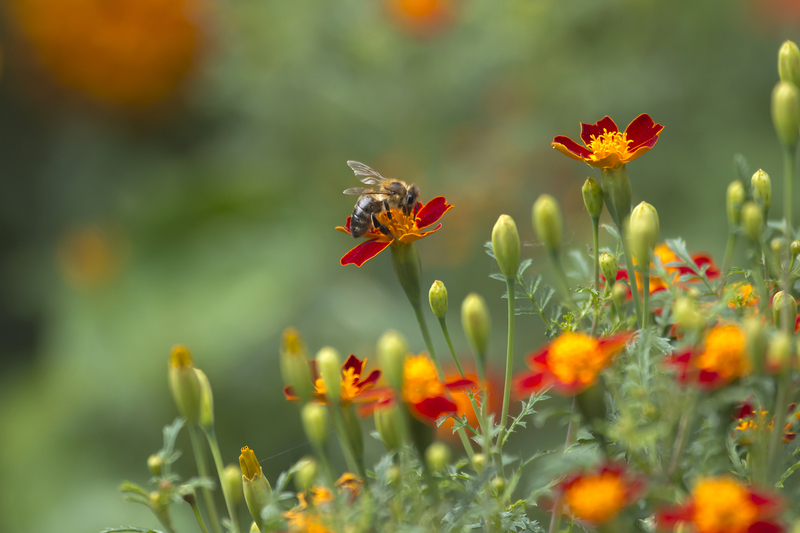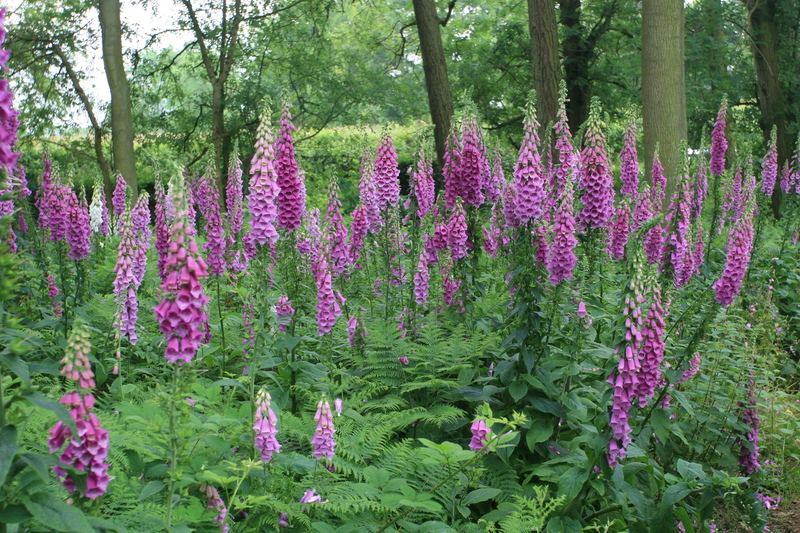Achieve a Pristine Landscape with 3 Weed Control Strategies
Posted on 22/08/2025
Achieve a Pristine Landscape with 3 Weed Control Strategies
Creating and maintaining a beautiful, pristine landscape is every homeowner's dream. Unfortunately, weed invasion can make this dream elusive and leave your lawn or garden looking untidy and neglected. Having an effective weed control strategy is vital to maintaining the health and aesthetics of your outdoor spaces. In this comprehensive guide, we will explore three proven weed management techniques that will help you achieve a lush, weed-free landscape--guaranteed to enhance your curb appeal and make your neighbors green with envy.

Why Effective Weed Control Is Essential for a Pristine Landscape
Weeds aren't just unsightly; they compete vigorously with your desirable plants for sunlight, nutrients, and water, potentially endangering the health of your grasses, flowers, and shrubs. Moreover, certain types of weeds can serve as hosts for pests and diseases, further complicating landscape maintenance. By implementing efficient weed control solutions, you not only improve the appearance of your property but also protect the investment you've made in your landscape.
- Improved aesthetics: Enjoy an immaculate, professionally groomed appearance.
- Healthier plants: Allow your desired vegetation to flourish without unnecessary competition.
- Reduced maintenance: Spend less time and money on remediation and more time enjoying your outdoor spaces.
Understanding the Enemy: Types of Weeds
Before selecting a weed prevention plan, it's important to understand the three primary categories of weeds you might encounter:
- Annual weeds: These weeds, such as crabgrass and chickweed, germinate, grow, and die within a single year, but produce many seeds.
- Perennial weeds: Dandelion and bindweed are examples that live for multiple years and may regrow from roots even if the top is removed.
- Biennial weeds: These, like wild carrot, live two years, usually flowering and seeding in their second year.
*Identifying* the type of weed present in your landscape is critical for selecting the most effective weed management approach.
Three Essential Weed Control Strategies for a Pristine Landscape
To maintain a pristine landscape, incorporate a combination of cultural, physical, and chemical techniques. By using a holistic approach, you can dramatically reduce the presence and persistence of weeds, regardless of your local climate or soil type.
1. Preventive Measures: Stop Weeds Before They Start
The easiest weeds to deal with are those that never grow! Prevention is the foundation of an effective weed control plan. Consider these key steps:
- Mulching: Applying a thick layer of organic mulch (like bark, straw, or wood chips) or inorganic mulch (landscape fabric, gravel) smothers weed seeds, prevents light penetration, and retains soil moisture. Choose mulch based on your garden's needs for an added boost in both weed control and plant health.
- Dense Planting: By tightly spacing groundcovers, shrubs, or flowers, you minimize open soil which weeds crave. Utilizing a living mulch approach further limits weed access to necessary resources.
- Use of Pre-Emergent Herbicides: For lawns and established beds, applying a suitable pre-emergent prevents annual weed seeds from successfully germinating. Always follow the manufacturer's instructions and apply at the recommended times for maximum effectiveness.
- Regular Overseeding: In lawns, thick healthy grass resists weed intrusion better than thin or sparse turf. Annually overseeding fills gaps and maintains a lush green carpet.
Tip: Consistent watering and fertilization also promote healthy plant growth, giving your desired species a competitive edge over weeds.
2. Physical and Mechanical Removal: Take the Fight Directly to the Weeds
Where prevention isn't enough, targeted physical weed control ensures quick removal before weeds have a chance to mature and spread. Regular, hands-on intervention can be very effective, particularly for smaller gardens or landscape beds.
- Hand Pulling: Simple but incredibly effective for young, shallow-rooted weeds--ideally after rain when the soil is moist and roots release easily. Use gloves and aim to extract the entire plant, root and all.
- Hoeing and Cultivation: Shallow cultivation with a hoe can quickly slice off small weeds at the soil surface. Choose the right tool for your soil and be gentle to avoid disturbing the roots of desirable plants.
- Solarization: In sunny climates, you can harness the power of the sun to kill weed seeds and roots. Cover sections of infested soil with clear plastic for 4-6 weeks during peak summer; the heat will destroy most seeds and pathogens.
- Flame Weeding: Specialized flame weeders or torches are useful for paths, driveways, and areas away from flammable materials. The heat destroys weed cells, causing rapid die-back.
Tip: Repeat visits and vigilance are necessary. Don't allow weeds to flower or set seed, as this only perpetuates the problem.
3. Chemical Weed Control: Strategic and Responsible Application
While organic and physical methods are often preferred, sometimes weed-killing chemicals are warranted--especially for tough, perennial, or invasive species. The two main categories are:
- Pre-Emergent Herbicides: As already mentioned under prevention, these block seed germination but do not affect existing plants or established weeds.
- Post-Emergent Herbicides: These are sprayed on actively growing weeds, providing targeted control; formulations may be selective (targeting only broadleaf weeds in grass, for example) or nonselective (killing nearly all plants contacted).
When using herbicides for weed management, always:
- Read and follow all label instructions to avoid damaging desired plants or contaminating the environment.
- Spot-treat only where necessary to protect pollinators and maintain healthy soil biology.
- Use integrated weed management, combining chemical and non-chemical strategies for best, long-lasting results.
Tip: Consider natural or organic herbicides with ingredients such as vinegar or essential oils, but note these are most effective on small or young weeds.
Integrated Weed Management: Combining All Three Strategies
No single strategy guarantees total weed elimination. The best way to achieve a truly pristine, weed-free landscape is to incorporate each of these strategies--prevention, physical removal, and chemical control--as circumstances dictate. This integrated approach reduces your weed seed bank over time and minimizes reliance on chemical inputs.
Practical Integrated Weed Management Tips
- Monitor regularly: Walk your landscape weekly in growing season, removing young weeds before they mature.
- Rotate removals: Switch up your tactics as seasons change--mulch in spring, hoe in summer, pre-emergents in autumn.
- Practice healthy gardening: Amend soil with compost, maintain optimal pH, and water efficiently for dense, healthy groundcover and lawns.
Eco-Friendly Weed Control: Protecting the Planet While Achieving a Pristine Landscape
Responsible weed management isn't just about appearances; it's also about sustainability. Whenever possible, prioritize organic weed control methods and ecosystem-safe products to protect beneficial pollinators, birds, and soil health.
- Install native plantings that are naturally weed-resistant and support local wildlife.
- Limit unnecessary soil disturbance, which brings new weeds to the surface.
- Create buffer zones between treated and natural areas to avoid runoff into creeks or wetlands.
By thoughtfully integrating these eco-friendly strategies into your landscape routine, you safeguard your environment while maintaining a landscape that's the envy of the neighborhood.
Common Landscape Weeds and Their Control Methods
| Weed Type | Description | Best Control Methods |
|---|---|---|
| Dandelion (Taraxacum officinale) | Deep taproot; perennial; yellow flowers and fluffy seeds | Hand dig taproot; use selective post-emergent in turf; regular mowing |
| Crabgrass (Digitaria spp.) | Annual grass; fast spreading in thin lawns | Pre-emergent in early spring; overseed lawn; spot treat post-emergent |
| Bermudagrass (Cynodon dactylon) | Perennial grass; invades beds and lawns | Regular edging; mulching; non-selective herbicides for severe cases |

Frequently Asked Questions about Weed Control and Pristine Landscapes
How often should I apply mulch for weed prevention?
In most climates, apply a 2-3 inch layer of mulch annually in spring or early summer to maintain effective coverage and weed suppression.
Are chemical weed killers safe for pets and children?
Some herbicides can be harmful if ingested or contacted. Always read product labels, follow waiting periods after application, and consider using organic alternatives in high-traffic or play areas.
What's the best method of weed control for my vegetable garden?
Emphasize mulching, hand pulling, and shallow hoeing. Avoid residual chemical herbicides near edibles, and consider using landscape fabric under walkways for added control.
Conclusion: Transform Your Property with Effective Weed Management
Achieving a weed-free and pristine landscape requires patience, planning, and unwavering vigilance. By using a combination of preventive measures, physical removal, and selective chemical treatments, you can reclaim your garden and lawn, ensuring they remain beautiful and healthy year-round.
Start today by assessing your current weed issues and implementing these three weed control strategies. Enjoy the peace of mind that comes from a well-tended landscape and spend more time relaxing in your outdoor haven. Whether you're battling stubborn dandelions or perennial invaders, these tried-and-true methods will help you maintain the pristine landscape you've always wanted--no matter the season.
Ready for a gorgeous garden? Implement these weed control strategies now and achieve a landscape that shines with pride and beauty!



